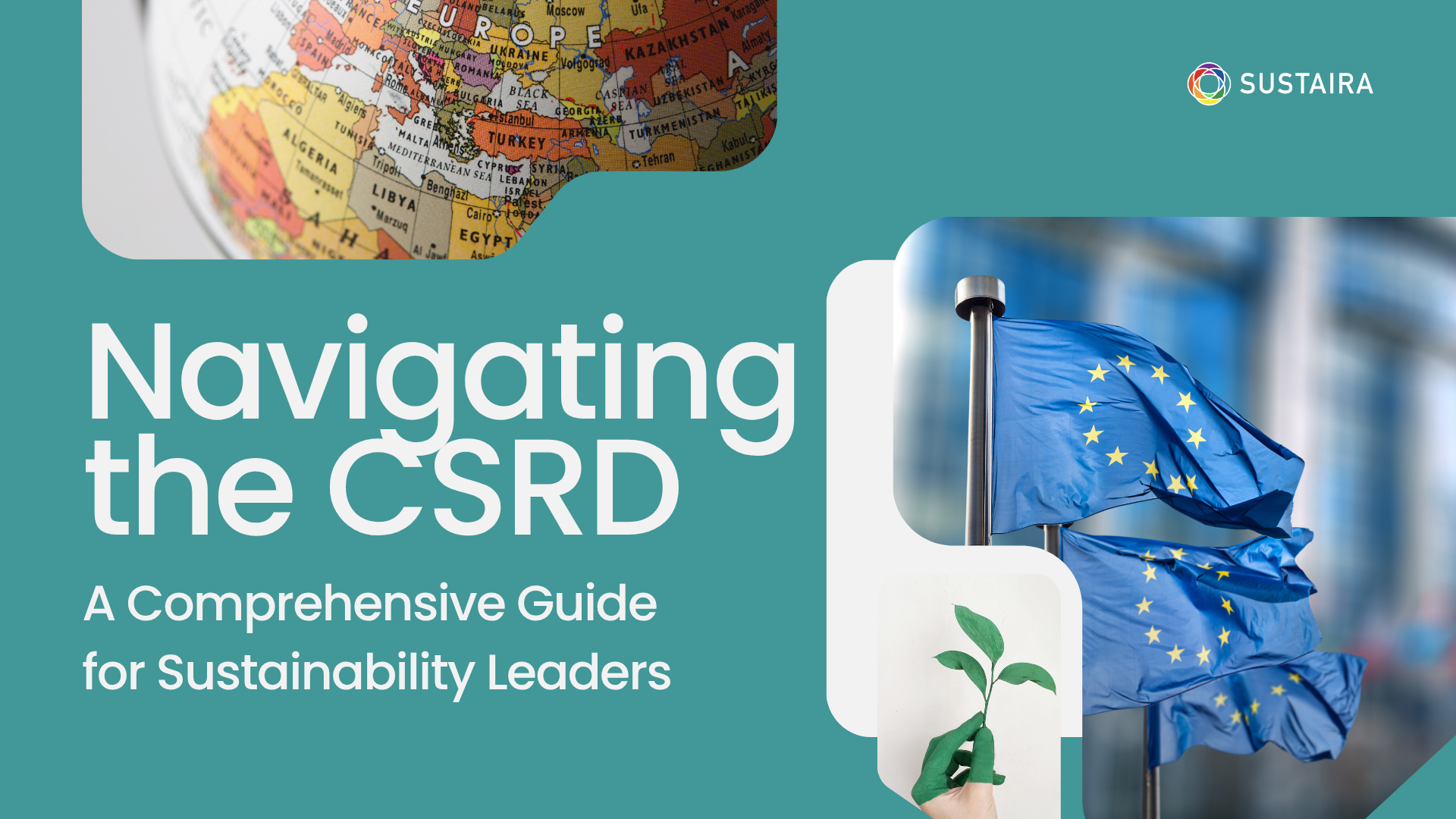Navigating the CSRD: A Comprehensive Guide for Sustainability Leaders
In the rapidly evolving sustainability landscape, the one directive that sustainability leaders cannot ignore is the CSRD. This guide offers a strategic, high-level roadmap walking you through the key phases organisations undertake, where pitfalls lie, and how to stay ahead of regulatory and technology developments. At Sustaira, we believe reporting is only the start. The real value lies in transforming your data into strategic action. That is why we have launched our Industry-Specific Sustainability Suites, built to accelerate the journey from compliance to impact.
Example CSRD journey our clients typically follow
Step 0: Legal Scoping – Start with the big question
Before you dive into materiality assessments or data collection, go to legal, finance and executive management and ask: "Which entities of ours fall under the CSRD and ESRS umbrella?"
Identify your group boundary, subsidiaries, and reporting obligations under the directive.
Recognise this is not static. The regulatory perimeter is still shifting in 2025. EFRAG published revised exposure drafts of the European Sustainability Reporting Standards (ESRS) on 31 July 2025, opening a 60-day consultation which may lead to substantive change in what falls in scope or how disclosures must be made.
When speaking with legal, emphasise future-proofing. The "what counts" may evolve.
Top tip: Start early and iterate often. Treat this as a foundation for sustainability strategy.
Step 1: Double Materiality Assessment – The strategic heart
Materiality is no longer just a buzzword. Under CSRD, you must evaluate both your organisation’s impacts on environment and society and how sustainability-related issues affect your business.
Use a robust, well-documented DMA process. EFRAG’s revised guidance emphasises clarity on methodology, using either top-down or bottom-up approaches.
Consider typical impact topics such as Scope 1-3 emissions, water use, and supply chain-related human rights risks. Include emerging topics like biodiversity, circular economy, and value-chain traceability.
Revised ESRS drafts propose relief mechanisms, such as "reasonable and supportable information available without undue cost or effort," to ease early burdens.
Top tip: Treat your DMA as a living tool. Embed it into your ongoing strategy rather than as a one-off project.
Step 2: Definitions and Gap Assessment – Align and map
Once you have identified your material topics, define how to measure them and compare your current state to where you need to be.
Ensure definitions are aligned across the organisation. Examples include Scope 3 categories, gender pay calculations, and supply-chain risk definitions.
Build a gap table: topics, measured/not measured, data availability, intended future state.
The revised ESRS drafts may reduce datapoints by around 57 percent and shorten standards by 55 percent. Build flexibility into your gap-planning rather than over-investing in rigid frameworks.
Top tip: Use this phase to set priorities and allocate resources efficiently.
Step 3: Strategy, Digital Solutions and Pre-Assurance
Step 3.1 Digital Reporting Solutions
Sustainability data architecture is foundational. You need a solution built for action, not just compliance.
Ensure your platform can adapt to changing datapoints, new templates, and vertical variations.
For example, Sustaira’s Industry-Specific Sustainability Suites offer modular, industry-tailored applications for sectors including industrial, construction, logistics, consumer goods, finance, energy, and public sector. Pre-configured workflows and metrics are aligned to each sector.
Top tip: Choose technology that grows with your plan. Modular solutions provide flexibility and scalability.
Step 3.2 Pre-Assurance
Do not wait until you publish to speak with your assurance partner.
Early engagement allows testing of controls, data flows, and methodology alignment.
Because ESRS is evolving, assurance partners will look for evidence of adaptability. Document your versioning and process evolution.
Top tip: Make assurance part of your journey, not the final checkpoint.
Step 4: Data Collection and Reporting – Deliver version 1 with intention
If you have done the prior steps well, you are ready for your first report.
Collect data early to give teams time to ensure accuracy.
Accuracy and honesty are key. It is better to disclose missing data than to provide incomplete or incorrect information.
Engage the executive team and board. Leadership from the top ensures long-term adoption.
Learn and improve. The first report is rarely perfect; build your second-year plan now.
Top tip: Frame your report as part of a continuous improvement cycle.
What is new in 2025/26 – Key considerations for sustainability leaders
EFRAG published Exposure Drafts for revised ESRS on 31 July 2025, starting a 60-day consultation.
Revised standards show a reduction in mandatory datapoints by around 57 percent and a shorter overall standard by 55 percent.
Industry-specific applicability and modular technology are now strongly emphasised. Sustaira’s Industry-Specific Sustainability Suites support large enterprises in different sectors with tailored workflows and metrics.
Relief mechanisms for smaller companies and hard-to-measure metrics are being formalised, including thresholds for undue cost or effort.
For large enterprises, focus on systemic readiness, including data architecture, value-chain engagement, and assurance preparedness.
Why this matters for large organisations
If you are leading sustainability within a large enterprise, you need to:
Align your roadmap to CSRD, ESRS, and your industry’s unique challenges.
Build scalable architecture that ensures consistency across business units while allowing flexibility for local conditions.
Be adaptable, as both technology and regulation continue to evolve.
Maintain credibility with the board, stakeholders, and investors through disciplined processes and a meaningful roadmap.
Remember, the CSRD is an opportunity for companies to demonstrate their commitment to sustainability. By following best practices and leveraging digital solutions, sustainability leaders can navigate the CSRD effectively and contribute to a more transparent and responsible business landscape.
Mastering CSRD Reporting: Best Practices & Insights
Dive deep into the Corporate Sustainability Reporting Directive (CSRD) and its profound impact on companies, society, and investors. This session will illuminate the path to understanding material sustainability impacts such as carbon emissions, water usage, and supply chain risks. Learn how to conduct a robust Double Materiality Assessment (DMA) and discover the common pitfalls and opportunities that come with CSRD reporting. Plus, we’ll explore how digital solutions can streamline and enforce your reporting process.




